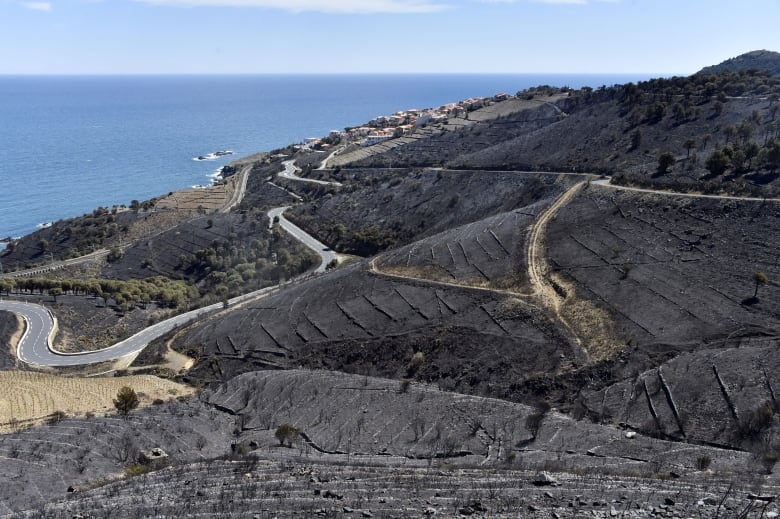
Scorching temperatures may be expected in the summer months in southwestern Europe, but not so much in springtime.
Yet Portugal and Spain have seen temperatures hitting the mid- to high-30s C in the final week of April.
“We have reached record-breaking values in many parts of our geography, for this part of the year,” said Víctor Resco de Dios, a professor of forestry at the University of Lleida in Spain, noting in an email that such high temperatures would be higher than those expected in June.
The hot weather has left the Iberian Peninsula neighbours managing heat-related challenges quite early in the year, as officials scramble to keep people safe.
In some cases, seasonal measures relating to fire prevention and heat mitigation are being ramped up much earlier than usual.
‘Typical of summer’
On Thursday, Spain’s national weather service said much of the country would see temperatures “typical of summer,” with possible 38 C weather in the southern Guadalquivir Valley.
But the mercury climbed higher than that, reaching 38.8 C yesterday at Córdoba’s airport, which the weather service, AEMET, said exceeded a prior April record for mainland Spain.
And while temperatures started dropping in Portugal on Friday, the heat wave persisted in parts of Spain.
The AEMET website showed peak temperatures at 35 C or above in six of Spain’s provincial capitals on Friday — Albacete, Ciudad Real, Córdoba, Granada, Jaén and Sevilla. More than 20 others were expected to see temperatures of 30 C or higher.
Daniel Argüeso, a climate scientist at University of the Balearic Islands in Palma, Spain, said the full impact of this heat blast won’t be known for a few weeks.
“It is important to highlight the impact of early heat events as compared to summer events, because they disrupt ecosystems and pose unacclimated population to high heat stress,” he said via email.
Spain’s extreme heat has prompted officials to take steps to ensure members of the public can stay cool.

In Madrid, a so-called urban “beach” — a series of splash fountains along the Manzanares river — opened on Friday, a month earlier than usual.
Spanish media previously reported that the Health Ministry would consider implementing a heat prevention plan two weeks early to help regions respond to the unseasonably warm weather.
But some people worry about what’s going to happen when the true summer weather arrives.
“This is already unbearable,” Loli Gutiérrez, a 70-year-old Madrid resident, told The Associated Press.
“We are only in April. If this happening in April, how is it going to be June?”
Spain has also been dealing with long-term drought. The Andalusia regional government says tens of thousands of people in the wider Córdoba province are relying on drinking water being trucked to their homes, because drought has exhausted a nearby reservoir.
Argüeso, the climate scientist, said there are regions of central and southern Spain that have, from a drought perspective, not had any significant rainfall in months.
He said this is a concerning position to be in just ahead of the Western Mediterranean dry season “that goes from June to August, when there’s basically no rain.”
Elevated fire risks
In Portugal, the central town of Mora reached 36.9 C on Thursday, breaking a 78-year-old April record, its weather agency said.
Reuters reported Friday that Portuguese authorities have put two municipalities — Proença-a-Nova in the centre of the country and Tavira in the southern Algarve region — on extreme alert for wildfires.
Wildfires have had deadly consequences in Portugal in recent years, including in 2022.
A particularly devastating series of wildfires saw dozens of people killed there in 2017.
Resco de Dios said the fire risk in Portugal is “not that high” right now as compared to other parts of the Iberian Peninsula.
Spain, he pointed out, has already seen 54,000 hectares of land burned by wildfires this year, which European Forest Fire Information System data indicates is already more than half the area burned in an average full year (roughly 80,000 hectares) between 2006 and 2022.
“This is thus another indication that the fire season is lengthening,” he said.
“We must be cautious because an extreme year does not make a trend, but the frequency of these extreme years is increasing, which is what is worrying.”
Argüeso, at the University of the Balearic Islands, said the combination of the recent high temperatures with Spain’s ongoing drought “has a direct impact on the fire season,” which he said is now starting earlier each year.
“The prospects for the summer aren’t good because the soil moisture is extremely low in most of the Iberian Peninsula,” he said. “There are still hopes that May could bring some rain that would alleviate the conditions.”
Meanwhile, French authorities are aiming to have all wildfire-fighting personnel and their aircraft ready for deployment by June.
That’s a month earlier than in the past — though recent experience with wildfires prompted officials to move up the timing of those preparations.
“Last year we had wildfires as early as June, so we decided … to mobilize the troops to the maximum, and that the aircraft and ground troops be fully ready on June 1st,” François Peny, civil security general inspector, said Thursday when speaking at an airbase in Nîmes, France.
“It’s one month earlier than in the past,” he said. “This is a very clear sign of climate change.”
The country has already seen its first major wildfire of the year, between Banyuls-sur-Mer and Cerbère — where some 1,000 hectares burned earlier this month.


